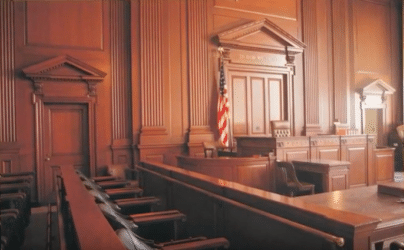A study set to be published in the journal Language looked at how well court reporters in Philadelphia transcribe dialects and found that 40 percent of the sentences they had transcribed were wrong, the Philadelphia Inquirer reported.
 Linguists from the University of Pennsylvania, a sociologist from New York University and a co-founder of Philadelphia Lawyers for Social Equity found that among the 27 court reporters they tested, 67 percent of their attempts at paraphrasing inaccurate, and 11 percent were called “gibberish.”
Linguists from the University of Pennsylvania, a sociologist from New York University and a co-founder of Philadelphia Lawyers for Social Equity found that among the 27 court reporters they tested, 67 percent of their attempts at paraphrasing inaccurate, and 11 percent were called “gibberish.”
Court reporters must test at a 95 percent accuracy rate to be certified in Pennsylvania.
Linguists note that African American English is a dialect that has its own grammatical rules.
African American English speakers have “a very reasonable expectation” to be understood in the court system, said Jessica Kalbfeld, a doctoral candidate in sociology at New York University and co-researcher on the study.
“They’re not getting the benefits of those rights, because people aren’t understanding them and don’t even know that that’s happening,” she told the Inquirer.
In one example, a speaker in the study said, “That cop partner been got transferred,” meaning that the police officer had been transferred a while ago, and the court reporter recorded the line as: “That cop partner, Ben, got transferred.”
Black court reporters in the study scored higher in paraphrasing and syntax, but their transcriptions weren’t any more accurate.
Researchers also tested seven lawyers, three of whom spoke African American English, and found that black lawyers scored much higher in their comprehension of African American English than attorneys of other races.
Researchers said it’s possible that social differences and enduring disapproval of African American English, even among black people who speak it, may be a reason why black court reporters as well as non-black reporters scored poorly on their transcription.
“It could be they’re coming across forms that could not be in their speech community,” said researcher Taylor Jones, a doctoral candidate in linguistics at the University of Pennsylvania.

 A key factor driving the market’s growth is the increase in healthcare IT spending, the company reported. And specifically, they said, growth in IT spending on medical transcription will drive the market growth. The need for digital documentation and integration of data will lead to increased IT spending on healthcare.
A key factor driving the market’s growth is the increase in healthcare IT spending, the company reported. And specifically, they said, growth in IT spending on medical transcription will drive the market growth. The need for digital documentation and integration of data will lead to increased IT spending on healthcare.
 The Sixth Amendment of the United States Constitution grants criminal defendants the right to a speedy and public trial by an impartial
The Sixth Amendment of the United States Constitution grants criminal defendants the right to a speedy and public trial by an impartial 